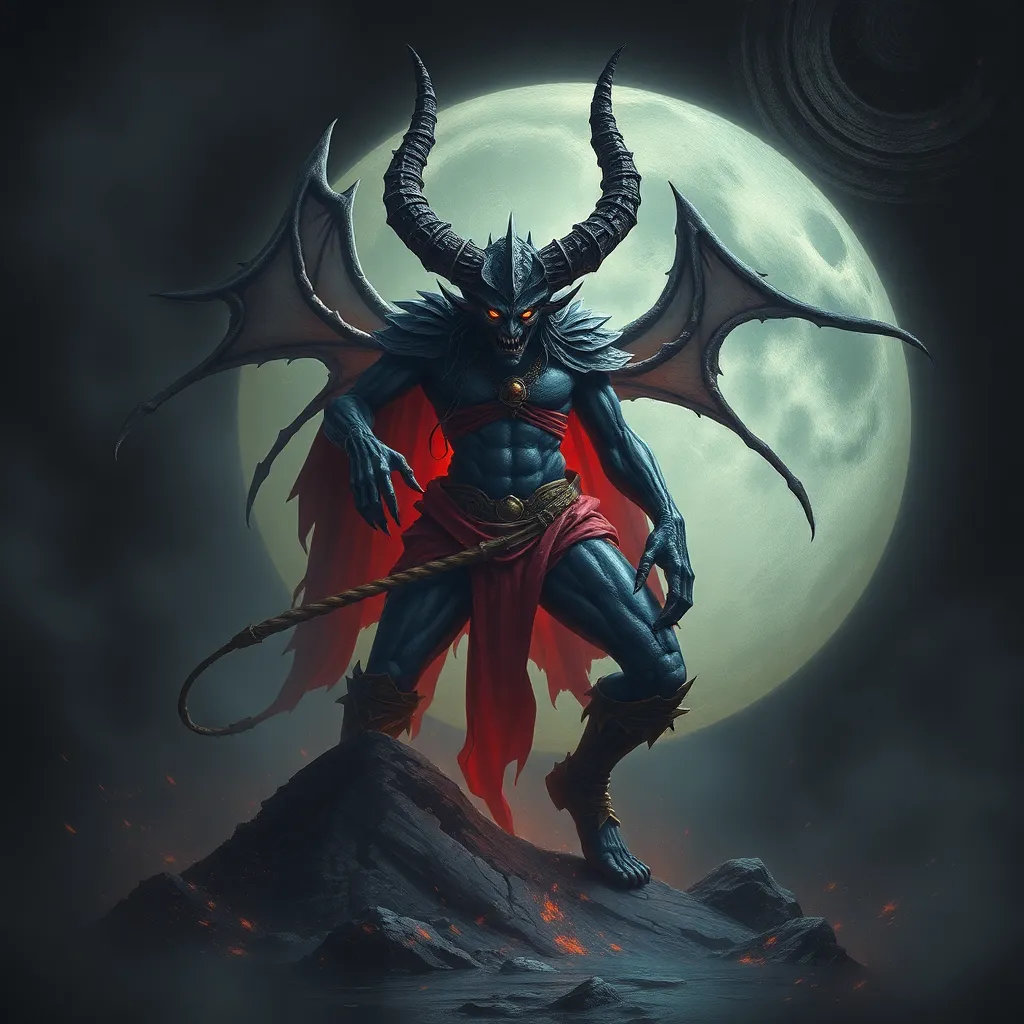Empusa’s Legacy: Tracing the Demon’s Influence in Modern Greek Folklore and Literature
I. Introduction
Empusa, a creature deeply rooted in ancient Greek mythology, has fascinated scholars and enthusiasts alike for centuries. Known as a seductive demon, she embodies both fear and allure, captivating the imaginations of those who encounter her stories. This article explores the significance of Empusa within Greek folklore, tracing her evolution and influence in modern literature and culture.
The purpose of this article is to provide an in-depth analysis of Empusa’s legacy, examining her origins, her transformation through folklore, her representation in modern literature, and her cultural significance in contemporary Greek society.
II. The Origins of Empusa in Ancient Greek Mythology
Empusa is often depicted as a shape-shifting demon, commonly associated with the underworld and the seduction of young men. In ancient texts, she is described as having one leg made of brass and the other of a donkey, symbolizing her dual nature of beauty and monstrosity.
In the pantheon of Greek demons and deities, Empusa is considered a servant of Hecate, the goddess of magic and witchcraft. She plays a vital role in the mythology surrounding the supernatural, serving as a cautionary figure against the dangers of succumbing to temptation.
Historical sources referencing Empusa include:
- Homer’s “Odyssey,” where she is mentioned as a being that preys on mortals.
- The writings of Apuleius, who refers to her in the context of magical practices.
- Later texts that explore her characteristics and the fear she incited in ancient Greek society.
III. Empusa’s Transformation Through Folklore
As time progressed, Empusa’s image evolved within Greek folklore, taking on various characteristics and meanings. In folk tales, she is portrayed as a more complex figure, often reflecting societal fears and the struggles of human desire.
Regional variations in the portrayal of Empusa illustrate her adaptability as a mythological figure. For example:
- In rural areas, she may be depicted as a malevolent spirit who haunts the night.
- In urban legends, she is sometimes portrayed as a more romantic figure, appealing to the themes of seduction and betrayal.
Empusa’s connection to other mythological figures, such as Lamia and the Gorgons, further enriches her narrative, showcasing the interconnectedness of Greek mythology.
IV. Empusa in Modern Greek Literature
Empusa has found her way into modern Greek literature, where authors explore her themes of desire, fear, and the supernatural. Notable literary works featuring Empusa include:
- “The Last Temptation of Christ” by Nikos Kazantzakis, where elements of temptation and the demonic are explored.
- Short stories by contemporary writers, who use Empusa as a symbol of inner conflict and societal issues.
The themes and motifs associated with Empusa in literature often revolve around:
- The duality of human nature.
- The struggle against temptation.
- Fear of the unknown and the supernatural.
Empusa’s impact on contemporary Greek authors is significant, as they draw upon her legacy to engage with modern issues such as identity, sexuality, and existential dread.
V. Cultural Significance of Empusa in Greek Society
Empusa’s influence extends beyond literature into traditional beliefs and practices within Greek society. She is often invoked in cautionary tales to warn against the dangers of seduction and betrayal.
In modern Greek identity, Empusa serves as a metaphor for:
- The struggle to maintain cultural traditions in a rapidly changing world.
- The tension between desire and morality.
As a symbol of fear and caution, Empusa remains relevant in discussions about personal agency and societal expectations.
VI. Comparative Analysis: Empusa and Other Mythological Figures
When compared to other demons in world folklore, Empusa shares similarities and differences that highlight her unique characteristics. For instance:
- Similarities with Lilith in Jewish mythology, both representing the dangers of female sexuality.
- Differences from figures like the succubus, who is often solely focused on seduction without the underlying themes of fear and morality.
Empusa’s influence extends into Western demonology, as her characteristics have been adapted and reinterpreted over time. Cross-cultural interpretations of Empusa reveal a rich tapestry of beliefs surrounding female demons and their impact on societal norms.
VII. The Legacy of Empusa in Popular Culture
Empusa’s legacy can be seen in various forms of popular culture, including films, art, and music. Her representation often reflects contemporary fears and desires, maintaining her relevance in modern storytelling.
In modern horror and fantasy genres, Empusa’s influence is evident in:
- Films that explore themes of seduction and the supernatural.
- Books that feature strong female characters embodying both beauty and danger.
The resurgence of interest in mythological figures has led to a renewed exploration of Empusa, indicating that her story continues to resonate with audiences today.
VIII. Conclusion
Empusa’s influence on Greek folklore and literature is profound, marking her as a significant figure in the exploration of human nature and societal fears. Her legacy, characterized by duality and complexity, reflects the enduring power of mythology in contemporary culture.
As we reflect on Empusa’s legacy, it becomes clear that she remains a vital part of the narrative surrounding Greek mythology. Future research and exploration of her figure could uncover even more about her impact on modern society and the evolution of mythological storytelling.



